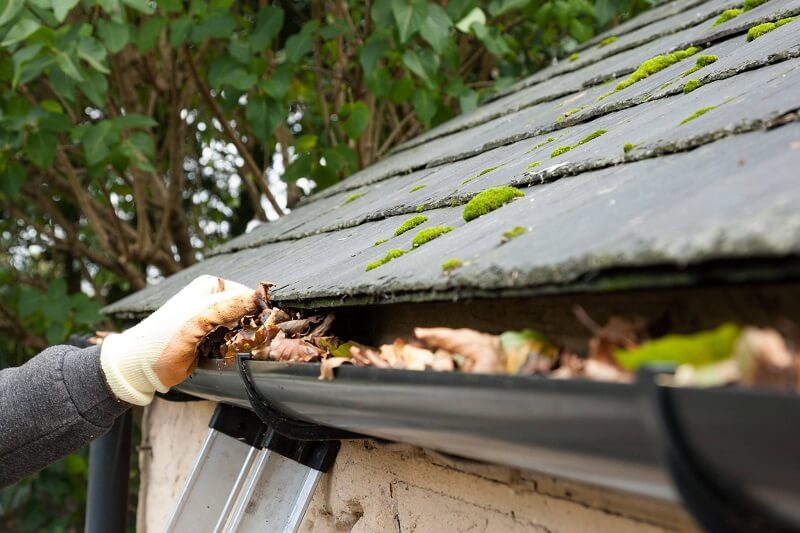Replacing your roof can be an inconvenience. Picture moving your family or staff out of the building for a few days while the new roof installation takes place. There’s the dust, dirt, and fuss that go with the work. Then there’s the financial investment needed to re-roof a property. It’s estimated that 75% of roof repairs could be avoided by homeowners simply performing low-level maintenance such as regular cleaning, and performing simple visual inspections of the roof after bad weather to check for damage, etc. However, most people don’t and this is why costly repairs are usually necessary.
So, can you do anything to delay or prevent this from happening to you? Of course – it all comes down to smart roof maintenance. Many roof repairs can be avoided if you take the time to maintain your roof.
Follow these simple roof cleaning and maintenance tips to keep your roof strong, safe, and lasting for years.
1. Check your roof twice a year
While a professional roof inspection by a contractor is the safe and practical route to go, you can check out your roof superficially too to pick up visible issues. Inspect the overall condition of your roof twice a year, ideally in early spring and late autumn. You needn’t walk the entire length and breadth of the surface to carry out a successful roof inspection. You can just hop up there and give it a quick scan to see if there is anything that obviously needs further inspection.
For example, missing or broken tiles will be easy to spot. If you’ve had heavy wind or a storm during the season, you’ll need to see if the gutter system has been damaged too. See something out of sorts? Call a professional in to help.
2. Book a Professional Roof Inspection Annually
A qualified roofing inspector will know what to check for in the not-so-obvious areas of your roof. They’ll be able to diagnose the issue and offer you a plan to get it fixed before more damage is caused to your roof or structure.
3. Clean Gutters Regularly
During summer and autumn, your gutters need you to keep an eye on them closely. Your gutters play an important part in protecting your roof from water damage. They transport water that collects on the surface down to the ground. When you clean out debris from the gutters to ensure they are not obstructed, also check that they aren’t sagging, pointing the wrong way or damaged in any way that affects their function. A damaged gutter will undoubtedly lead to a leaky roof down the line.
If a particularly bad storm has hit your home, wait for the weather to clear and then give the gutters a proper cleanup. You want to ensure that water can continue to pass through them – even when a downpour hits.
4. Inspect the Flashing
Flashing is the material around chimneys, exhaust stacks, and other vents (it is usually made out of metal), and it prevents water from leaking around the edges. When flashing is broken or punctured, or the sealant is damaged, leaks occur. Flashing can easily be replaced if there are signs of trouble. It’s a small investment compared to the extensive costs you’re looking at if water enters your roof and damages your property.
5. Trim Your Tree
If you have limbs of trees hanging over your roof, you’ll want to take control of the situation as soon as you can. When the wind blows, the branches can knock off tiles, damaged gutters, or puncture a hole in the roof surface. If branches and leaves rest on the roof, they can also cause damage over a period. A fallen branch hitting your roof can spell disaster – and an expensive one at that.
6. Check For Pests
It’s a fact of life that wild animals will discover your roof and attempt to make it their home. It’s the perfect shelter. They may find a gap to gain access or create holes to find their way in. If you get a hint that creatures are living in your roof space, a pest control expert is your first port of call. Once the issue is resolved, call in a roofing professional to make the necessary repairs and reinforce the roof, so they don’t return.
7. Prevent Mildew and Moss Growing on Your Roof
If your roof is located in the shade, mildew and moss will find conditions ideal for thriving. While the growth can look messy and bring down the overall appeal of your property, there are other reasons you need a ship-shape cleanup. The flora can allow moisture to form on your roof, eventually leading to rot. A roofing professional should treat the roof before damage is done.
8. Check the Walls and Floor
You don’t have to get on the roof to check for potential problems. Simply walking around the perimeter of your home is an excellent strategy to look for problems – particularly after a storm. Look for fallen tiles or gutter parts and downpipes (including nails that should be supporting your gutters). Puddles near your foundations could indicate that the gutters have overflowed. When this happens, you’re at risk of the structure of your home being permanently damaged.
9. Hit the Attic
Attics are often forgotten spaces but pop your head up to check it out monthly. Look for signs of leaks or holes in the roof. It’s one of the easiest checks to perform as part of an overall roof maintenance strategy. Mold or peeling paint are also obvious red flags.
The bottom line? Regular roof maintenance is so easy. It’s a healthy home protection habit that will save you money both now and in the future.


















